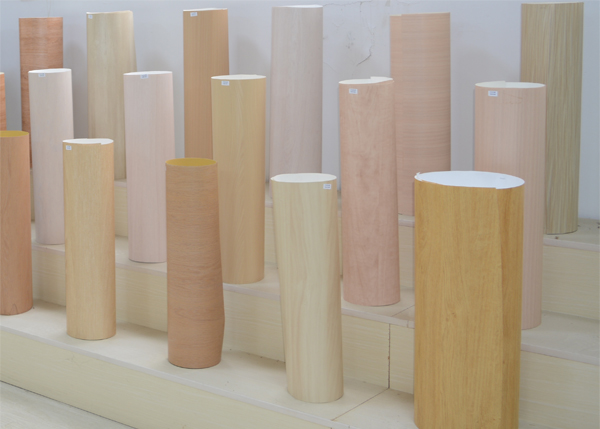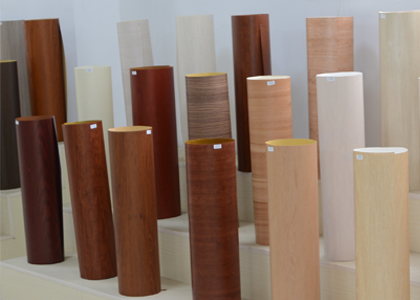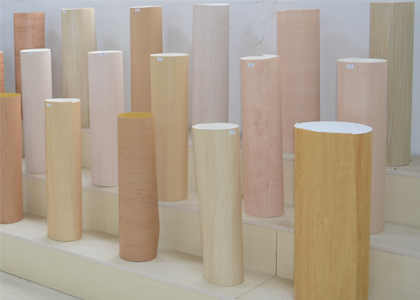
Table of Contents
- 1. Introduction
- 2. What is Decorative PVC Film/Foil?
- 3. What is Decorative PET Film/Foil?
- 4. What is Decorative PP Film/Foil?
- 5. Chemical Composition Comparison
- 6. Physical Properties of PVC, PET, and PP Films/Foils
- 7. Aesthetic Qualities
- 8. Cost Comparison
- 9. Durability and Resistance
- 10. Environmental Impact
- 11. Printing and Decoration
- 12. Applications of Decorative PVC Film/Foil
- 13. Applications of Decorative PET Film/Foil
- 14. Applications of Decorative PP Film/Foil
- 15. Advantages and Disadvantages of PVC, PET, and PP
- 16. Conclusion
- 17. Frequently Asked Questions (FAQ)
1. Introduction
In the world of decorative films and foils, PVC, PET, and PP are three of the most commonly used materials. Each material has its own unique properties, making them suitable for different applications. Whether you're looking for glossy finishes, durability, or cost-effectiveness, these films are widely used in various industries such as packaging, automotive, and interior decoration. In this article, we will explore the key differences between these materials to help you choose the right one for your needs.
2. What is Decorative PVC Film/Foil?
Polyvinyl Chloride (PVC) is a synthetic plastic polymer known for its flexibility and durability. Decorative PVC films are commonly used for their high gloss finish, printability, and resistance to environmental factors.
- Features: PVC films are soft, durable, and offer high transparency and gloss. They are chemically resistant and can be easily printed on.
- Applications: PVC films are widely used in furniture, wall coverings, automotive interiors, and packaging.
3. What is Decorative PET Film/Foil?
Polyethylene Terephthalate (PET) is a strong, heat-resistant thermoplastic polymer that is ideal for applications requiring high strength and clarity. Decorative PET films offer exceptional transparency and superior surface finish.
- Features: PET films are known for their high tensile strength, thermal stability, and resistance to UV degradation.
- Applications: PET films are commonly used in electronics, luxury packaging, food packaging, and labels.
4. What is Decorative PP Film/Foil?
Polypropylene (PP) is a lightweight, cost-effective thermoplastic polymer that is often used for packaging materials and decorative films. It is known for its chemical resistance and low environmental impact.
- Features: PP films are lightweight, have good chemical resistance, and are commonly used in applications where cost is a major factor.
- Applications: PP films are commonly used in food packaging, labeling, and lightweight decorative applications.
5. Chemical Composition Comparison
- PVC: Composed of carbon, hydrogen, and chlorine elements, PVC can be modified for varying hardness and flexibility.
- PET: Made from the polymerization of terephthalic acid and ethylene glycol, PET offers high strength and superior thermal stability.
- PP: Made from the polymerization of propylene monomers, PP has a simpler chemical structure, which makes it a cost-effective option.
6. Physical Properties of PVC, PET, and PP Films/Foils
- PVC: Offers excellent flexibility and transparency, making it ideal for decorative uses that require a glossy appearance.
- PET: Known for its high tensile strength, good heat resistance, and superior UV stability, making it ideal for long-term exposure to the elements.
- PP: Lightweight and chemically resistant, but lacks the clarity and glossy finish of PVC and PET films.
7. Aesthetic Qualities
- PVC: Offers high gloss and smooth surfaces, giving it a premium aesthetic quality.
- PET: Known for its superior transparency and smooth finish, often used for high-end products and packaging.
- PP: Typically offers a matte or low gloss finish, making it suitable for less high-end applications.
8. Cost Comparison
- PVC: Relatively low cost, making it ideal for mass production and budget-conscious applications.
- PET: More expensive compared to PVC and PP, often used in high-end packaging and specialty applications.
- PP: The least expensive of the three, commonly used for lightweight packaging materials.
9. Durability and Resistance
- PVC: Resistant to chemicals and moisture but may become brittle over time when exposed to UV light.
- PET: Offers excellent UV resistance and is the most durable of the three, ideal for long-lasting applications.
- PP: Offers strong chemical resistance but is less resistant to UV degradation and can be more prone to damage under harsh environmental conditions.
10. Environmental Impact
- PVC: Non-biodegradable and difficult to recycle, raising concerns about its environmental footprint.
- PET: Fully recyclable and considered more environmentally friendly than PVC and PP.
- PP: Also recyclable, but like PVC, not biodegradable, and can contribute to plastic waste.
11. Printing and Decoration
- PVC: Known for its excellent printability and often used for screen printing and heat pressing.
- PET: Suitable for high-end printing techniques such as gravure and flexographic printing.
- PP: Less ideal for printing but can be enhanced with coatings or laminations for improved decoration.
12. Applications of Decorative PVC Film/Foil
- Furniture: Used in decorative panels and coverings.
- Packaging: Common in food packaging, cosmetic packaging, and labels.
- Automotive: Applied in interior decoration and trim.
13. Applications of Decorative PET Film/Foil
- Electronics: Used for packaging and protective films for high-end devices.
- Luxury Packaging: Ideal for food, cosmetics, and premium product packaging.
- Packaging: Used in clear packaging where visibility is crucial.
14. Applications of Decorative PP Film/Foil
- Food Packaging: Used for lightweight and cost-effective packaging.
- Labels: Common in labeling applications, especially in low-cost markets.
- Home Decoration: Used in wallpapers and decorative laminates.
15. Advantages and Disadvantages of PVC, PET, and PP
- PVC: Advantages—Cost-effective, versatile, and highly printable. Disadvantages—Prone to brittleness under UV exposure.
- PET: Advantages—Durable, UV-resistant, high clarity. Disadvantages—Higher cost compared to PVC and PP.
- PP: Advantages—Low cost and good chemical resistance. Disadvantages—Less UV stability, lower aesthetic finish.
16. Conclusion
Choosing between PVC, PET, and PP films and foils depends on the specific requirements of your project. PVC is suitable for cost-sensitive applications requiring high gloss and printability. PET is ideal for high-end products requiring durability and UV resistance. PP is the best option for lightweight, low-cost applications. Consider the advantages and disadvantages of each material to make the best choice for your needs.
17. Frequently Asked Questions (FAQ)
- What is the main difference between PVC, PET, and PP films?
- The primary differences are their chemical composition, durability, UV resistance, and cost. PVC is cheaper and more flexible, while PET offers superior durability, and PP is more cost-effective but less resistant to UV.
- Which material is best for high-end packaging?
- PET is the most suitable material for premium packaging due to its clarity, strength, and UV resistance.
- Can PP films be recycled?
- Yes, PP films are recyclable, although they are less UV-resistant than PVC and PET films.



